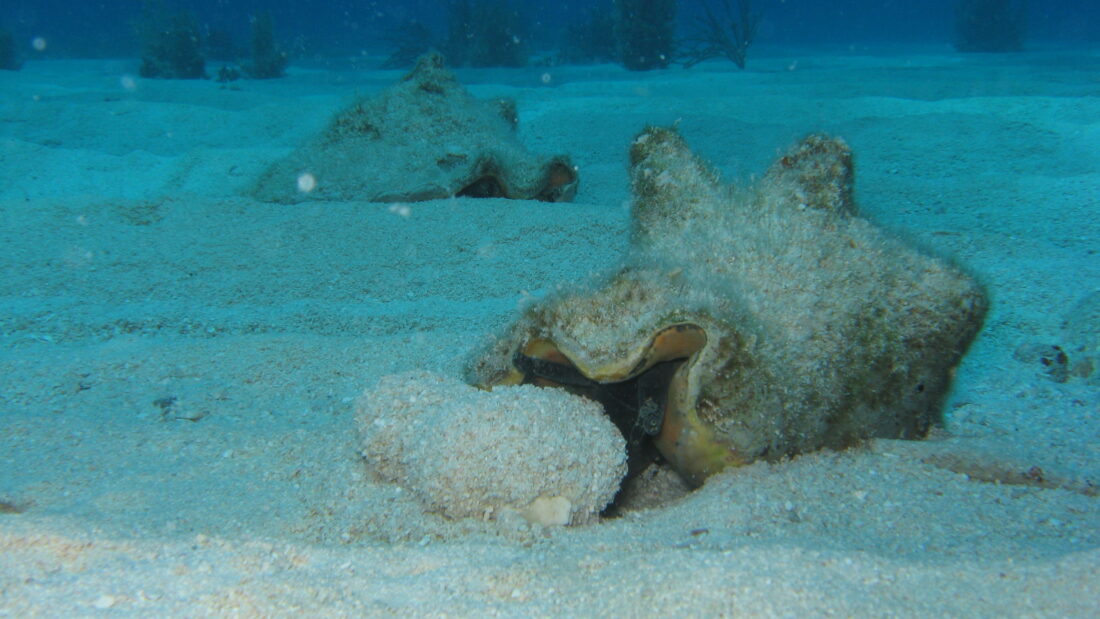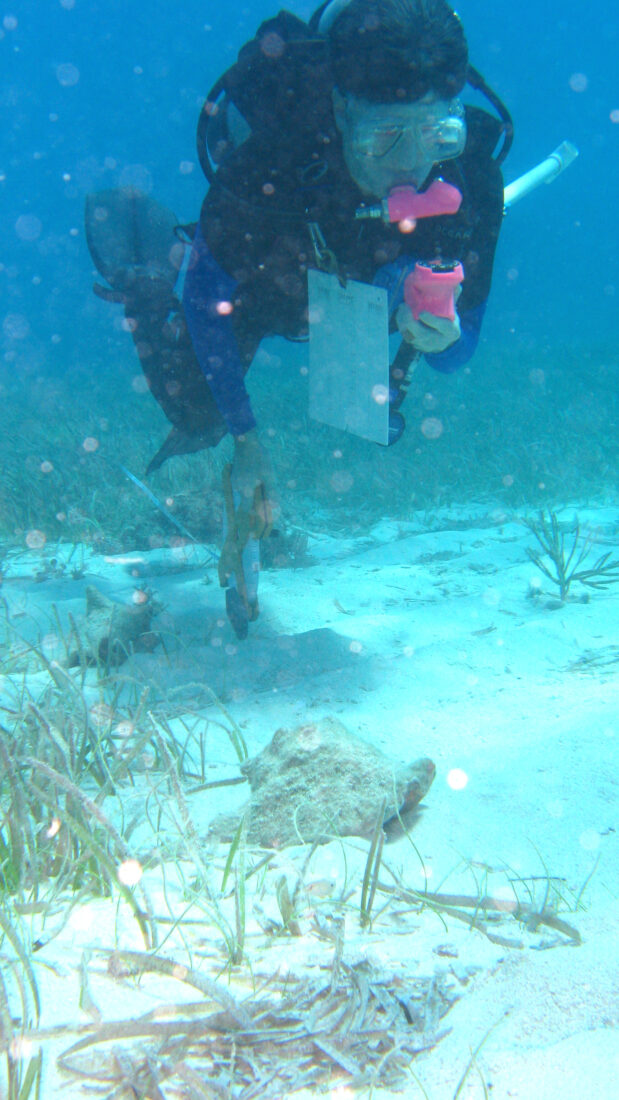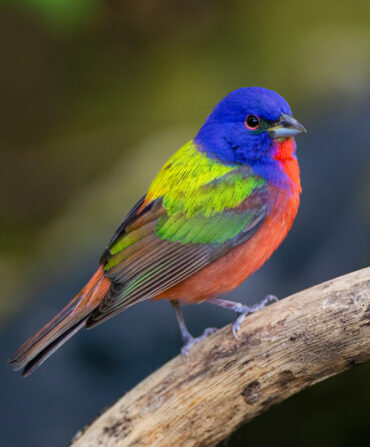When explaining the situation with queen conch in the Florida Keys, Gabriel Delgao reaches for an apocalypse metaphor: If the last man is in Australia and the last woman is in Mexico, those two humans are going to have a hard time finding each other to repopulate the human species. “It’s the same thing with the conch, just on a smaller scale,” says the research scientist and conch specialist with the Florida Fish and Wildlife Conservation Commission. “They are snails, after all.” The species is such a symbol of the Keys that the string of islands is nicknamed the Conch Republic, but the state of that republic has been weakened—some queen conchs are struggling to mate. Delgado, with a little help from Keys citizens, has a plan to play matchmaker this spring.
For those who think more conch fritter than marine snail when hearing “queen conch,” here’s a biology overview: These gastropod mollusks are the most abundant large conch native to the Caribbean basin. New generations depend upon a male and female finding each other—using a claw-tipped foot not to ooze but to bizarrely hop across the ocean floor—to reproduce. The female then lays eggs (the masses of which “look like a croissant made of linguine,” Delgado says), and after four or five days, they hatch and ride the current in their plankton stage for roughly three weeks. Then, when they encounter suitable habitat, they settle down and metamorphosize. They’ll spend nearly four years as juveniles before the lip “flares” on their shells—a sign they’re reaching sexual maturity.

Today, Delgado estimates that the population of Keys queen conchs sits somewhere around just 350,000 individuals—paltry for a once prolific marine snail. Florida closed the commercial fishery in 1975 and the recreational fishery ten years later, but the conchs never surged back like biologists hoped. Periodic hurricanes haven’t helped—most recently, Irma wiped out half the population in 2017, followed by Ian administering another blow in 2022. For decades, the Florida Fish and Wildlife Conservation Commission has gathered data to try to understand the challenges the conchs face. Just a few weeks ago, NOAA Fisheries announced that queen conch will be listed as threatened under the Endangered Species Act.
Despite the unknown factors like climate change and the uncontrollable factors like hurricanes, research has made one fixable thing clear: Conchs in shallow waters aren’t reproducing, while their counterparts farther offshore are chugging along as well as possible considering low numbers and fragmented populations. “In knee- to chest-deep water, we’ve never observed mating or egg-laying,” Delgado says. “And when we looked at their ovaries and testes and their brains, we saw they were not developing properly.” Biologists still aren’t positive why—one working theory is that the shallow water’s temperature swings mean they quite never hit the Goldilocks zone for reproduction. But if moved to deeper waters, the conchs do just fine.

This spring, ahead of peak reproduction season in June, the Fish & Wildlife Foundation of Florida funded a plan for biologists to move conchs in shallow waters to mingle with conchs in known breeding populations five or so miles from shore. “We’ll be putting them about one meter apart,” Delgao explains. “Not so close that it’s unnaturally dense, but close enough that they’re still bumping into each other, so to speak.” The team’s goal is to relocate some two-hundred nearwater conchs in the hopes they’ll find mates and start contributing to future generations.
That’s where Keys locals come in. “There’s only so many of us and we can’t be everywhere, so we sent a request to the general populace for help locating nearshore queen conchs,” Delgado says. The response has clued researchers in to conchs all the way from Key West almost to Key Largo. Someone on Big Pine reported seeing a hundred conchs at a popular hangout spot for boaters. “He was speaking for the community and he told me, ‘Wrangle us up. We’ll help you move them.’”

Once collected, the conchs will be ready for a boat ride to their new homes, where divers will carefully place them so as not to trap air in their shells. “While they won’t be happy—you wouldn’t like it either if a space alien came and picked you up and moved you—we have every reason to believe they’ll remain out there,” Delgado says. Still, the team will check up on the translocated conchs monthly to monitor progress, and if all goes well, the efforts will likely continue next year.
“Queen conch holds a special place in the hearts of Florida Keys residents—if you’re born in the Keys, you’re referred to as a saltwater conch, and if you’ve lived in the Keys long enough, they call you a freshwater conch,” Delgado says. “The species definitely is part of the fabric of the local community, and we need to keep them around.”








